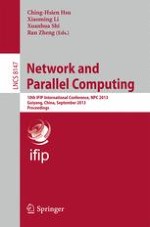2013 | Buch
Network and Parallel Computing
10th IFIP International Conference, NPC 2013, Guiyang, China, September 19-21, 2013. Proceedings
herausgegeben von: Ching-Hsien Hsu, Xiaoming Li, Xuanhua Shi, Ran Zheng
Verlag: Springer Berlin Heidelberg
Buchreihe : Lecture Notes in Computer Science
